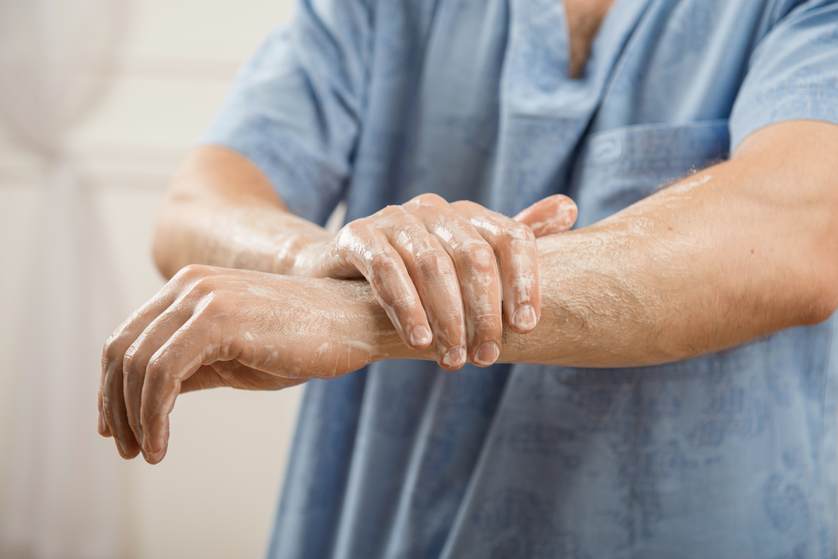1 December 2021
SARs-CoV-2 Prevention Behaviors in Military Healthcare Settings
National Handwashing Awareness Week is 01-07 December 2021
One of the most effective ways to stop the spread of germs and stay healthy is also one of the simplest — handwashing with soap and water. According to the Centers for Disease Control and Prevention (CDC), keeping hands clean can prevent 1 in 3 diarrheal illnesses and 1 in 5 respiratory infections, such as a cold or the flu. National Handwashing Awareness Week is observed annually during the first week of December as a reminder of the importance of practicing hand hygiene.
The virus that causes COVID-19 can land on surfaces. It’s possible for people to become infected if they touch those surfaces and then touch their nose, mouth, or eyes. The most reliable way to prevent infection from surfaces is to regularly wash hands or use hand sanitizer. Cleaning and disinfecting surfaces can also reduce the risk of infection. While ultraviolet germicidal disinfection (UV-C) has demonstrated efficacy against SARS-CoV-2, efficacy is dependent on a variety of factors.
Geneva-funded researchers recently confirmed in a study of healthcare workers that the fear of SARS-CoV-2 infection and transmission were prominent motivators for increased vigilance of environmental hygiene, among other findings. In this Geneva-managed study, researchers aimed to determine the longitudinal efficacy of ultraviolet germicidal disinfection (UV-C) while understanding additional factors influencing enhanced infection prevention behaviors, such as handwashing, during the pandemic.
First-authored by Geneva Research Coordinator Marisol Resendiz, research demonstrated the motivators and deterrents of UV disinfection technologies and found that greater than 80% of the participants in the study reported a minimum of four hand hygiene events per patient hour. Researchers also found that the “cleaning frequency of high-touch surfaces increased after installation of a UV-C disinfection tool and was sustained eight months into the COVID-19 pandemic.” Deterrents of UV-C use included technical concerns, lack of time, and preference for other disinfection methods.
A sampling of high-touch surfaces (stethoscope, personal electronic device, common access card, and hospital ID badge) and portable medical equipment (wheelchairs and mobile commodes) was used and surveys included hand hygiene estimates, frequency/method of cleaning, perception of UV-C, and factors influencing the use of enhanced disinfection tools.
Researchers concluded that UV-C disinfection could be efficacious for high-touch surfaces not currently governed by infection prevention and control guidelines and is associated with mild decreases in the bacterial burden of high-touch surfaces.
For additional information on enhanced cleaning and disinfection methods, please follow CDC recommendations.

Geneva-funded researchers recently confirmed in a study of healthcare workers that the fear of SARS-CoV-2 infection and transmission were prominent motivators for increased vigilance of environmental hygiene, among other findings.
HIGHLIGHTS
- First authored by Geneva Research Coordinator Marisol Resendiz, research demonstrated the motivators and deterrents of UV disinfection technologies and found that greater than 80% of the participants in the study reported a minimum of four hand hygiene events per patient hour.
- The most reliable way to prevent infection from surfaces is to regularly wash hands or use hand sanitizer. Cleaning and disinfecting surfaces can also reduce the risk of infection. While ultraviolet germicidal disinfection (UV-C) has demonstrated efficacy against SARS-CoV-2, efficacy is dependent on a variety of factors.
- Researchers concluded that UV-C disinfection could be efficacious for high-touch surfaces not currently governed by infection prevention and control guidelines and is associated with mild decreases in the bacterial burden of high-touch surfaces.


